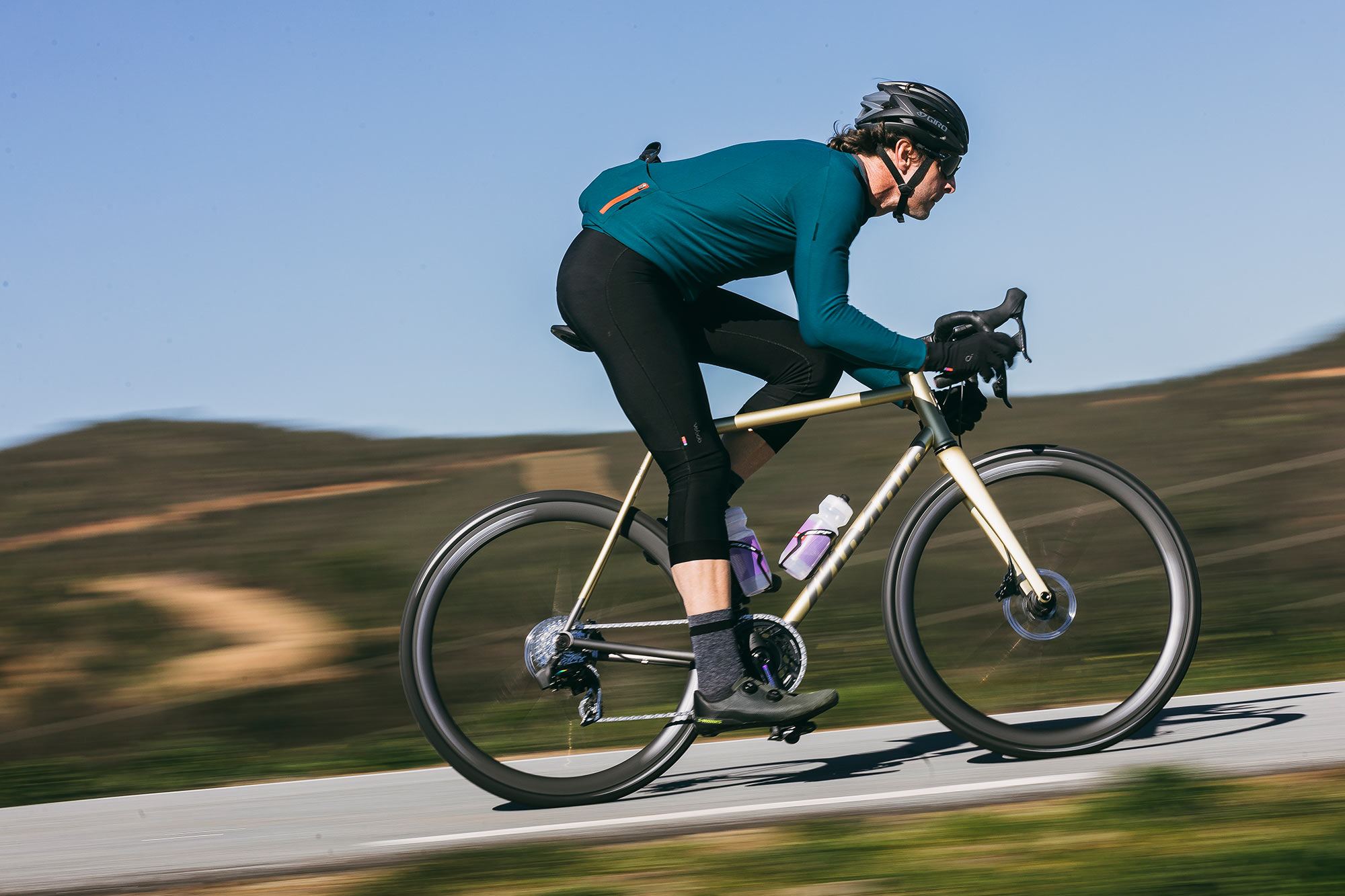The new SRAM Force AXS group sits somewhere between evolutionary and revolutionary, delivering premium performance at an agreeable price point. By taking the best features of Red and Rival and giving it a polished (and sparkly!) finish, SRAM gave its second-tier group new life on road and gravel.
I rode both the standard 2x road group and the 1x Force AXS XPLR gravel group at the launch, then had more time at home on the road bike before writing this. Here are my first impressions based on a couple hundred miles, starting with a direct comparison to the prior Force group.
2023 Force AXS vs. Force eTap
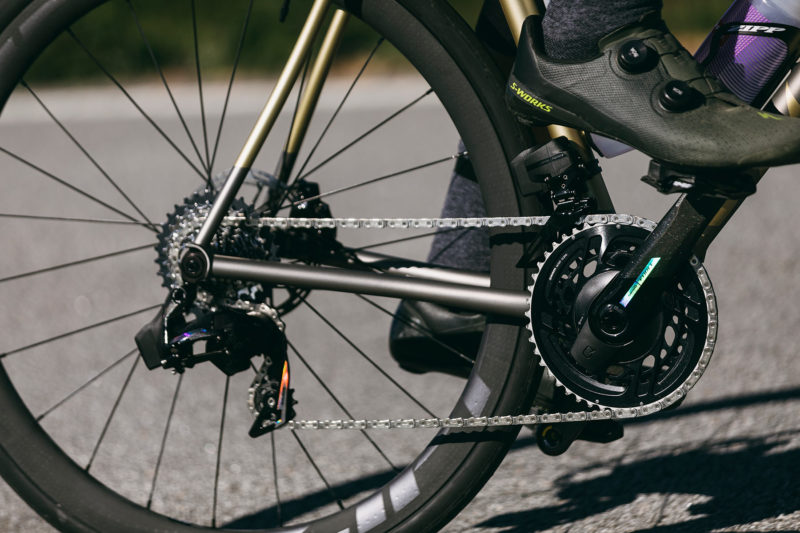
Beyond the sparkly Unicorn Gray finish and shimmering decals, the most obvious upgrade to the new Force group is the one-piece chainring. Borrowed directly from the top-tier SRAM Red group, it’s the same piece, just with a less expensive finish. This piece alone is responsible for saving most of the group’s weight over the prior eTap group, and it’s stiffer too.
Available with or without an integrated Quarq power meter, it’s also a great way to replace your Red chainring set and save a couple hundred bucks.

Ergonomically, the shifters and hoods are the biggest difference. The brake hoods are smaller with a slimmer diameter, making it easier to wrap my hands around it both on the flat part and curling a finger around the brake lever’s pivot.
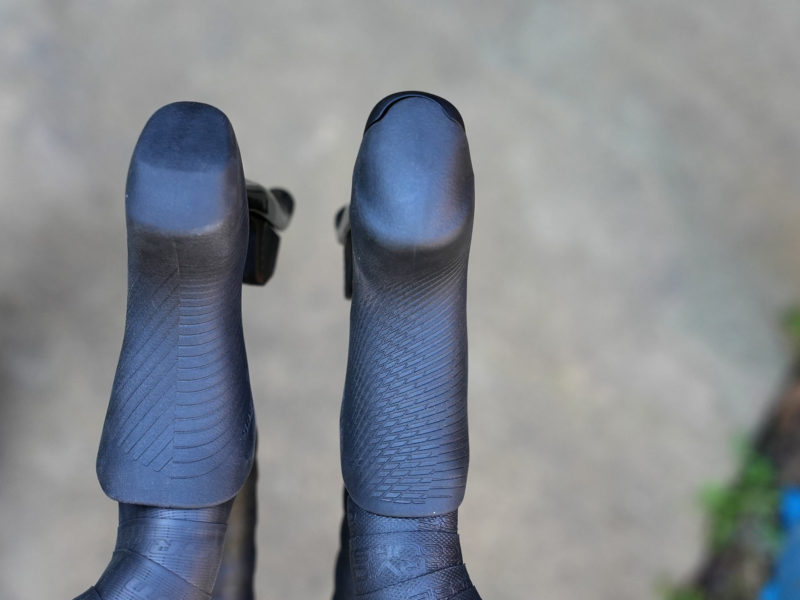
Contrast this with the top, which is just a bit broader on the new Force AXS, giving me a bit more platform to rest on when I’m leaning way forward. While I like the micro-texture of the old version better, the new one’s grooves wrap further around the hood cover for more total grip.

The shift paddles get longer and taper at the bottom. The idea was to create a bigger contact patch when shifting, so it’s easier to find it no matter what your hand position or how rough the road is.
The angled lines are indented at an angle to create grip too — not just cosmetic.
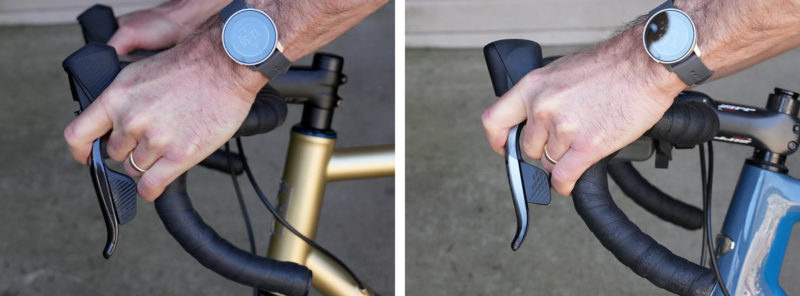
The other goal was to create more finger clearance when pulling the brake lever deeper into its travel. Depending on your hand position, it sort of works, but the top of the paddle still gets pretty close and can trap my pinky in some situations, which means I can’t pull the lever all the way in.
The new shape is better in this regard, but only slightly. However, the increased contact patch is welcome and certainly doesn’t decrease finger clearance. Worth noting is that this problem of having fingers block full lever pull is not exclusive to SRAM.
And, considering the lever’s pivot point is a few millimeters closer to the bar, it’s now easier to reach the brakes from tops and drops and perform one-finger braking.

The new Force AXS loses the brake pad contact adjustment but keeps the lever reach adjustment (which is accessed from underneath, behind the brake lever).

Visually, the new Force AXS rear derailleur looks more polished and high-end, which has us wondering what a new Red group might look like.
2023 Force AXS Ride Review

General performance is on par with expectations. The rear shifts the same, which isn’t surprising since neither the derailleur nor cassette changed except for cosmetically. SRAM’s rear shifting remains solid and quick enough.

The noticeable improvements in performance come from the two things that did change: the levers and the chainrings. Shifts are just a bit easier to execute thanks to the increased paddle size, and the chain moves confidently between chainrings. Shifting under power, like on a climb or a sprint, is not just effortless but also satisfying.
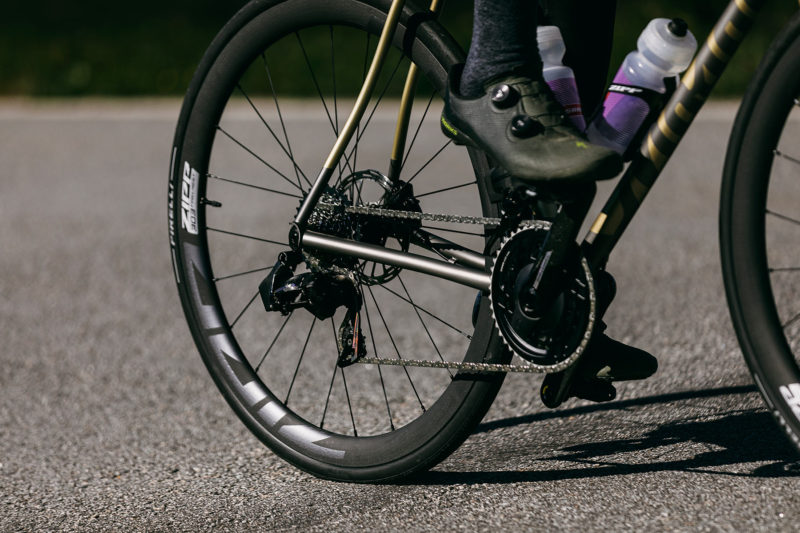
I’ve been a fan of SRAM’s 13-tooth chainring jumps since they were introduced. While not dramatically different than most other 2x combos, the particular sizes it chose seem to work really well in conjunction with its cassette options to provide an adequate range on any given ride.
Technically, a smaller 10-tooth cog is less efficient, but I don’t spend a ton of time in it and haven’t noticed any undue wear on my long-term Red or Force Wide group. I have a new Force group coming in for long-term testing, but given the basically identical parts, I suspect it’ll hold up as well as the others I’ve been riding for the past few years.

I enjoyed the new, smaller brake hoods and closer pivot placement on the road. On group rides where I’m hovering a finger over the levers just in case, it makes it easier to comfortably maintain that position. And pulling the brake lever is easier, either with one finger or two.
The reach adjust is always appreciated too, as I like to bring my levers in a bit since I typically mount them toward the very top of the handlebar’s clamping area. This makes them easier to reach in general, but especially when riding in the drops, which is key on descents and rough gravel.

Despite being bigger (and, thus, having bigger hands), I’m enjoying the smaller grips, especially on gravel with the Force XPLR group. The “horns” at the very front are smaller now too, thanks to the missing pad contact adjustment, which makes them easier to rest my hands on top for a (very) short-term aero break.
I do like having the remote Blips. But I’m on the fence about being forced into using the fully wireless Blips where I can’t replace the batteries. Convenient? Yes. Eco-responsible? Not really. Fortunately, SRAM seems to be hearing this and, well, it’s “constantly evaluating rider’s needs and working on stuff.” That said, the little nub of a trigger is easier to feel and use than the round button of the wired version, but both have their place — at least until the next Red update, probably.
Overall, the new Force group is like a shinier, more affordable Red group with all the same technology and performance. You could buy this and upgrade to OS ceramic bearing pulleys and still come out ahead, or put the extra money into something like wheels or a carbon handlebar where you’ll notice more of a difference.
The beautiful and interesting thing about a launch like this that, at a glance, seems only incremental and cosmetic, is it shows just how good trickle-down tech is making second- and third-tier groups. And it makes me think SRAM is going to have to do something really special for the next Red group…
So, yes, the new Force group is great. And it looks great too.
Side Note: We Rode in Portugal
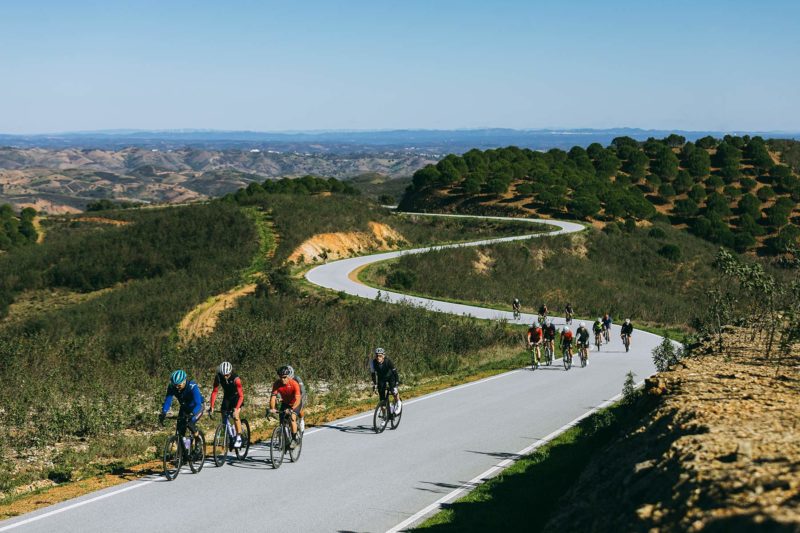
If you’re looking for somewhere awesome to ride, eat, surf, and possibly even retire, then … Portugal. Watts and I did a full week of gravel riding with Thomson Bike Tours, and the place is simply amazing. Endless roads, most with nearly perfect pavement and little traffic offer ribbons of mountainous routes with gravel service roads shooting off in every direction.

SRAM hired Fiona, owner of Echappee Portugal, to lead our rides and she’s amazing. Great routes, friendly local knowledge, and a very strong, skilled rider. Check her, or Thomson, out if you’re planning a trip and leave the ride logistics to the experts.
